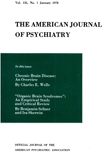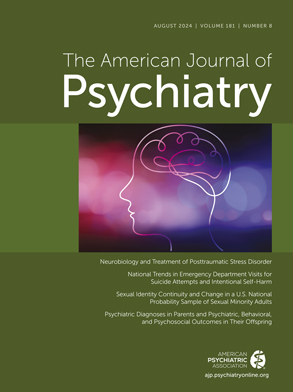Abstract
A report on the follow-up study of 50 children presenting behavior disorders and personality changes following an attack of encephalitis is presented.
The cases were followed for periods ranging from 4 to 26 years, the majority having been followed for more than 15 years.
Of the 50 children constituting this series, 39 were boys and 11 were girls, a ratio of more than 3 to 1. This tends to bear out the findings of other investigators that boys are more apt to show post-encephalitic type of behavior and personality changes than girls.
The 50 children composing this series were taken from an unselected series of 2500 children presenting all types of behavior disorders. This represents an incidence of 2% and indicates that the condition is by no means rare. The diagnosis will be made with even greater frequency once it is recognized that it can be made on the basis of the characteristic behavior reactions and personality changes even without a specific history of a previous attack of encephalitis or the presence of neuropathological changes.
The age range of onset was in the first decade of life in 49 of the cases, 50% occurring before the age of 5 years. Furthermore, the younger the patient when affected by the disease, the greater the likelihood of psychiatric sequelæ.
The types of encephalitis as ascertained, from the medical histories showed that the majority (27) were of the virus type, 14 of the toxic type, and 9 of the traumatic type.
In the great majority of the cases (36) the behavior difficulty or personality change was noted immediately following the attack of encephalitis. In spite of this, most of the cases were referred for study many years after the onset of the illness.
The majority of the children were referred for more than one type of behavior disorder. These covered the usual range of problems ordinarily studied at child guidance clinics. The abnormal patterns of behavior which these children exhibited could be readily divided into 3 groups (1) simple behavioral disturbances, (2) psychopathic behavior, and (3) psychotic behavior.
When these children were first studied, 14 were found to be feeble-minded and seven rated borderline. The remainder were either of average or superior intelligence. Forty-four of the children were retested several, years later. The I.Q.'s remained the same in 9 cases, improved in 1 case, and deteriorated in 34 cases. The frequency of intellectual deterioration is worthy of note as it seems to refute the prevailing belief that the most severe and lasting damage is in the emotional sphere in contrast to the preservation of the intellect.
Neurological findings were present in all but 9 cases. These were both of the pyramidal and extrapyramidal type. Ocular symptoms were present in 16 cases. Two children had petit mal attacks and 5 suffered from grand mal seizures. Four children showed symptoms of Parkinsonism. It should be noted that in some cases, the neurological findings appeared many years after the onset of the behavior difficulties.
Thirty-seven (74%) of the children in this series had a uniform and characteristic personality structure. In all the cases there was an underlying basic uniformity to their patterns of behavior which was fairly characteristic.
Only 9 of the 50 children have made a fairly satisfactory social adjustment; this despite the application in the majority of cases of the best available medical, psychiatric and social therapeutic techniques.
The 41 children who failed to make satisfactory social adjustments differed in certain fundamental respects from the 9 who did adjust. Among these differences may be mentioned (1) the preponderance of the toxic and traumatic forms of encephalitis in the unadjusted group; (2) the greater number of neurologic sequelæ such as convulsive seizures, Parkinsonism and psychoses in the unadjusted group; (3) the proportionately larger number of children in the unadjusted group who showed intellectual deterioration; and (4) the larger number of children in the unadjusted group who showed the characteristic personality make-up of the post-encephalitic. These criteria, therefore, furnish a possible prognostic basis for the determination of the ability of the child showing post-encephalitic behavior to adjust socially.
It is important that this condition be recognized if for no other reason than that the blame for failure to secure good results may be placed where it belongs. The failure of social therapy and psychotherapy in these cases cannot be attributed to faulty social or psychiatric techniques. Rather, such failure indicates that the problem of the child presenting post-encephalitic behavior disorders or personality changes is not solely one of psychopathology and psychodynamics. The psychopathological symptoms are primarily the results of the neuropathological changes and it is our present inability to correct the latter which accounts for the failure of treatment. These cases illustrate very pointedly the relation of function to structure in human behavior.

